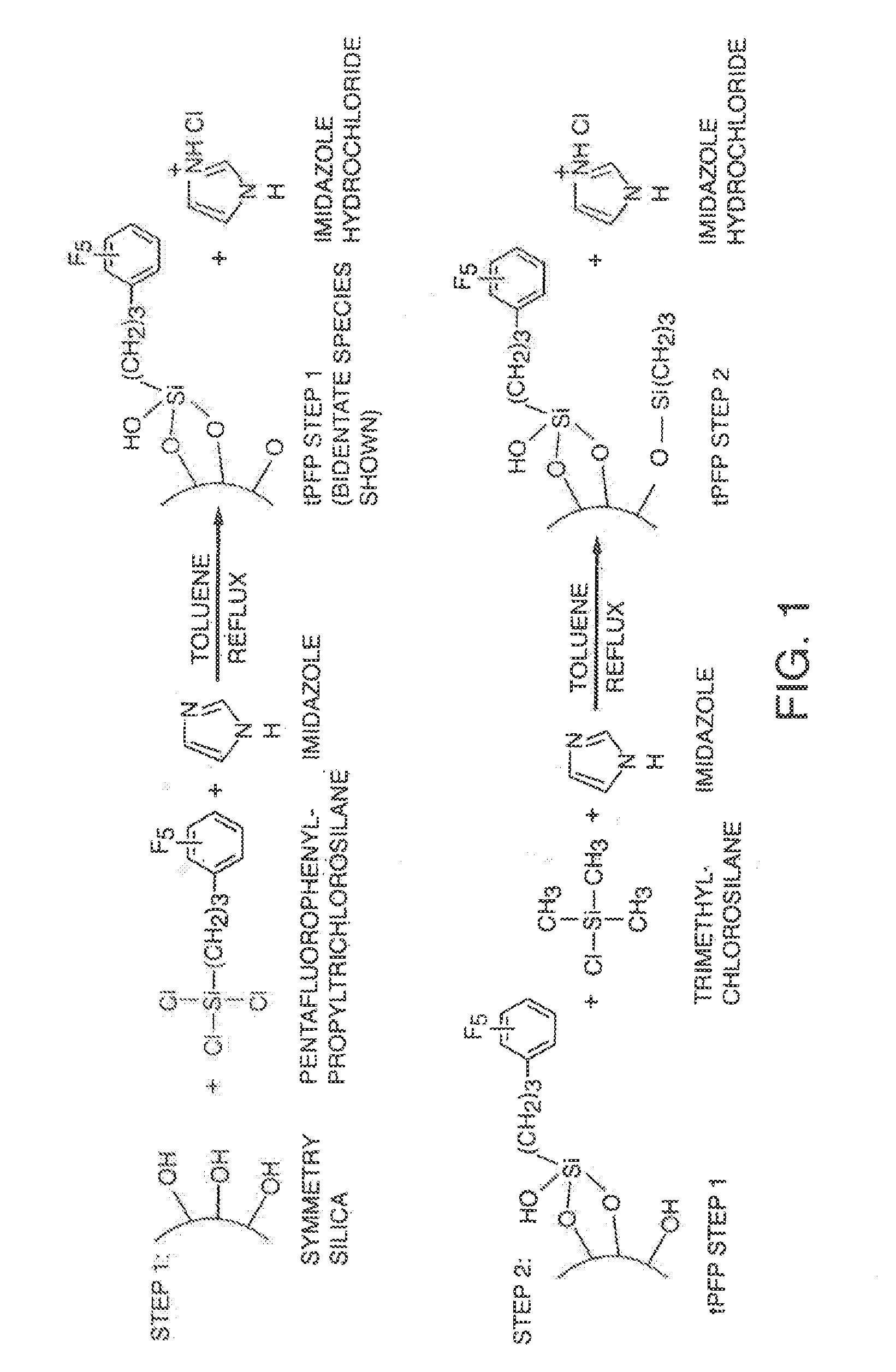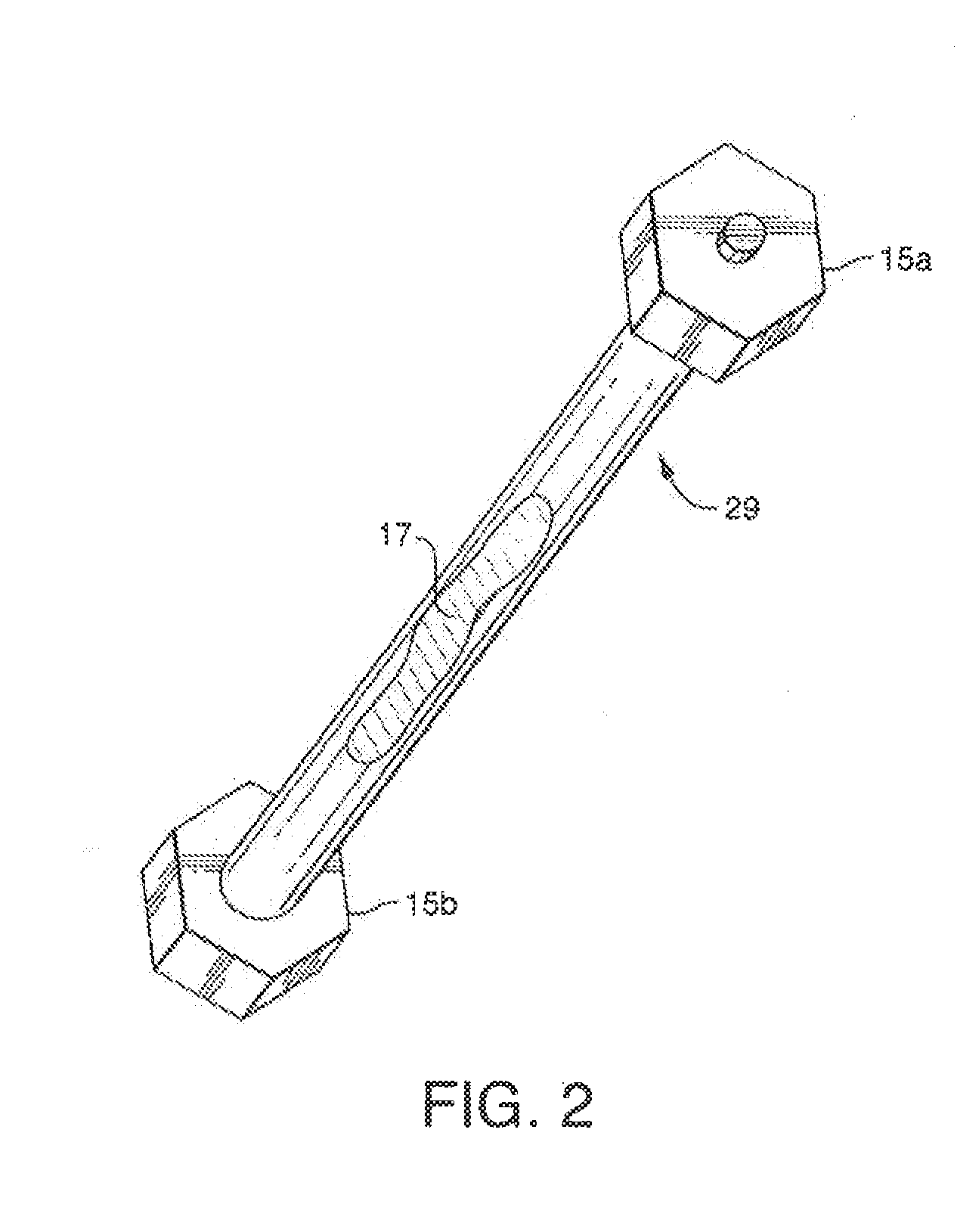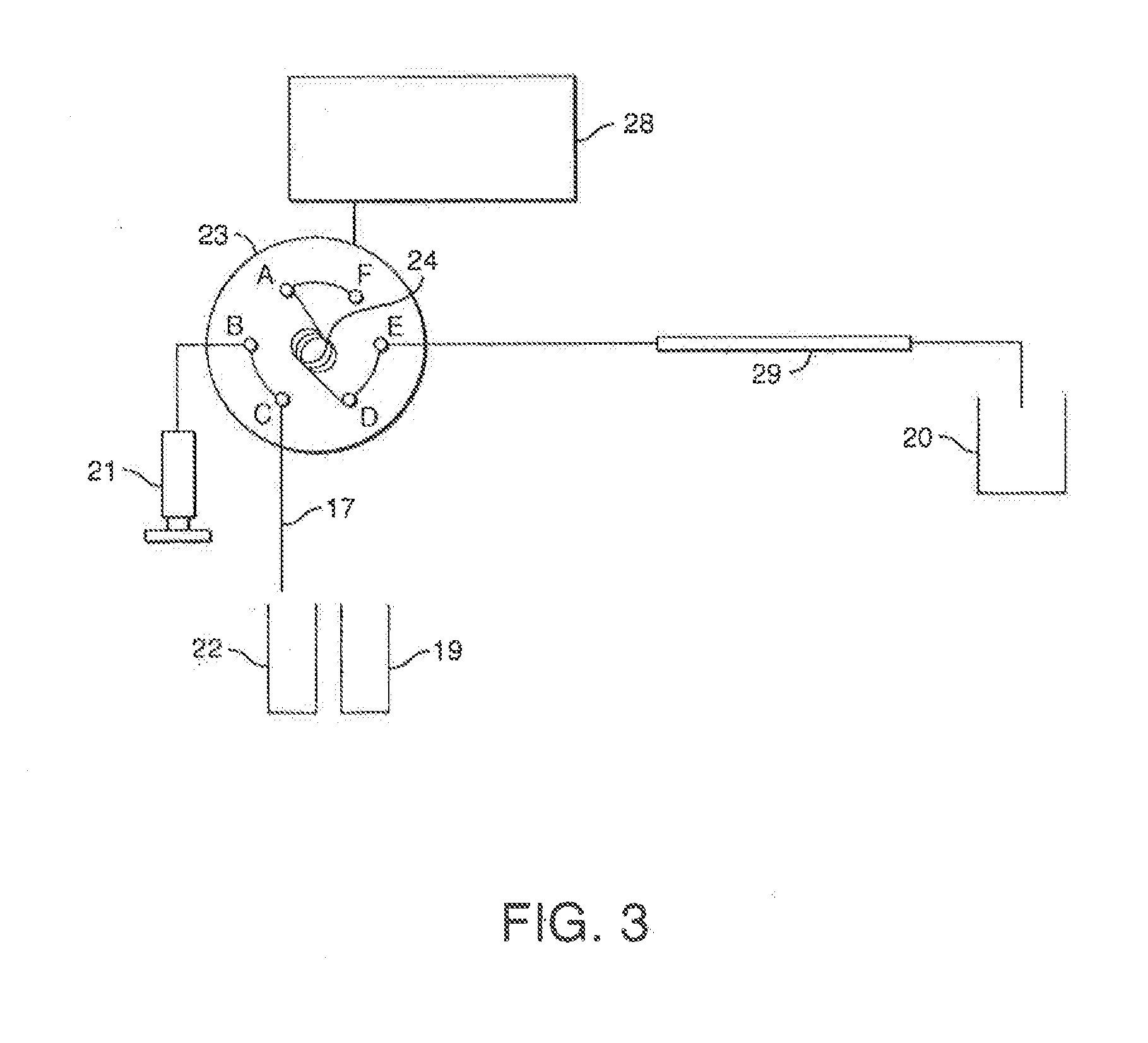Separation Devices and Method For Separating Phosphorylated Peptides and Proteins
a technology of phosphorylated peptides and separation devices, applied in the separation of peptides, chemical/physical processes, components, etc., can solve the problems of low concentration of phosphopeptides in such samples, relative sample complexity, and the inability to identify the most abundant phosphopeptides
- Summary
- Abstract
- Description
- Claims
- Application Information
AI Technical Summary
Benefits of technology
Problems solved by technology
Method used
Image
Examples
example 1
[0105]Materials
[0106]All reagents were used as received unless otherwise noted. Those skilled in the art will recognize that equivalents of the following supplies and suppliers exist, and as such the suppliers listed below are not to be construed as limiting.
[0107]Characterization
[0108]Those skilled in the art will recognize that equivalents of the following instruments and suppliers exist, and as such the instruments listed below are not to be construed as limiting.
[0109]The % C values were measured by combustion analysis (CE-440 Elemental Analyzer; Exeter Analytical Inc., North Chelmsford, Mass.). The specific surface areas (SSA), specific pore volumes (SPV) and the average pore diameters (APD) of these materials were measured using the multi-point N2 sorption method (Micromeritics ASAP 2400; Micromeritics Instruments Inc., Norcross, Ga.). The SSA was calculated using the BET method, the SPV was the single point value determined for P / P0>098, and the APD was calculated from the de...
example 2
[0110]In a first step, a sample of porous, spherical 5 μm silica (Waters Corporation, 335-350 m2 / g) was modified with of pentafluorophenylpropyltrichlorosilane (PFP, Silar Laboratories, Wilmington, N.C.; or Gelest, Morrisville, Pa.; at 10 μmol / m2 charge) using imidazole (Aldrich, Milwaukee, Wis.; at 12 μmol / m2 charge) in refluxing toluene (HPLC grade, J.T. Baker, Phillipsburgh, N.J.) for 3.5 hours. The reaction was then cooled and the product was filtered and washed successively with toluene, 1:1 v / v acetone / water and acetone (all solvents from J.T. Baker). The material was then refluxed in an acetone / aqueous 0.12 M ammonium acetate solution (Sigma Chemical Co., St. Louis, Mo.) for 2 hours. The reaction was then cooled and the product was filtered and washed successively with toluene, 1:1 v / v acetone / water and acetone (all solvents from J.T. Baker). The product was then dried at 80° C. under reduced pressure for 16 hours.
[0111]In a second step, these particles were further modified ...
example 3
[0119]An LCMS analysis, as described as the present invention, of enolase tryptic digest was performed using a Waters Alliance Bio HPLC and a Waters Micromass ZQ4000 mass spectrometer. The HPLC system was equipped with a 150×2.1 mm, 5 μm pentafluorophenyl (PFP) column, and operated at 40° C. The enolase digest sample (˜40 peptides) was spiked with 4 phosphopeptides (Table 1) in equimolar ratio and then loaded onto the column. The column was first eluted with a first, reverse-phase, eluent, then a second, ion-exchange eluent. The first and second eluents were, in this instance combined into a gradient of three mobile phases, the composition and gradient of which are shown below:
[0120]Mobile phase A: 0.1% formic add in water, pH 2.6
[0121]Mobile phase B: 0.08% FA in acetonitrile
[0122]Mobile phase C: 100 mM aqueous ammonium formate, pH 3.25
[0123]Gradient: 0-30 minutes reversed phase like gradient from 0 to 50% B, 30 to 35 ion-exchange like gradient changing 50% A to 50% C, B is kept con...
PUM
| Property | Measurement | Unit |
|---|---|---|
| attractive interaction | aaaaa | aaaaa |
| repulsive interaction | aaaaa | aaaaa |
| silane valences | aaaaa | aaaaa |
Abstract
Description
Claims
Application Information
 Login to View More
Login to View More - R&D
- Intellectual Property
- Life Sciences
- Materials
- Tech Scout
- Unparalleled Data Quality
- Higher Quality Content
- 60% Fewer Hallucinations
Browse by: Latest US Patents, China's latest patents, Technical Efficacy Thesaurus, Application Domain, Technology Topic, Popular Technical Reports.
© 2025 PatSnap. All rights reserved.Legal|Privacy policy|Modern Slavery Act Transparency Statement|Sitemap|About US| Contact US: help@patsnap.com



